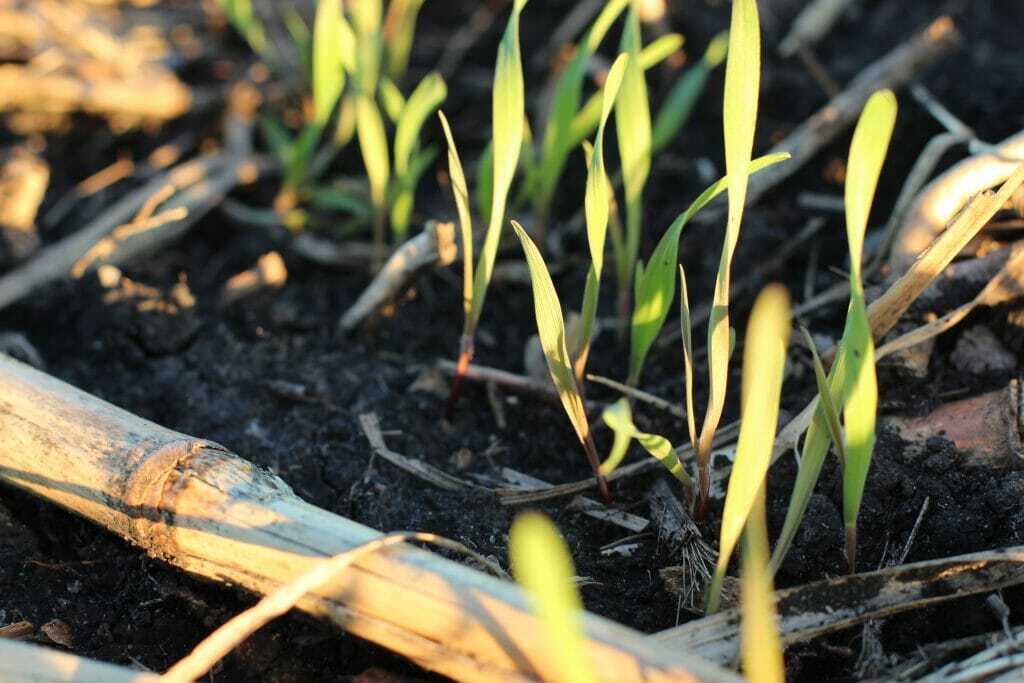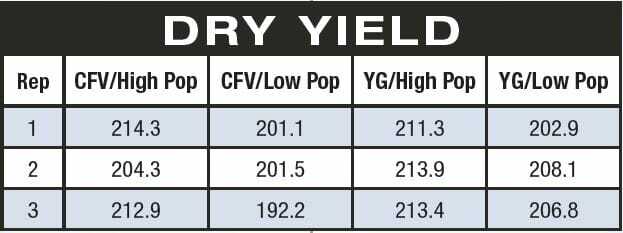How does crusting and rolling soybeans go hand in hand this season? Phil Long talks about these two topics in reference to this year’s growing season.
-
Latham Hi‑Tech Seeds
#AskTheAgronomist: Crusting Soils

-
Latham Hi‑Tech Seeds
Flooding and Saturated Soils
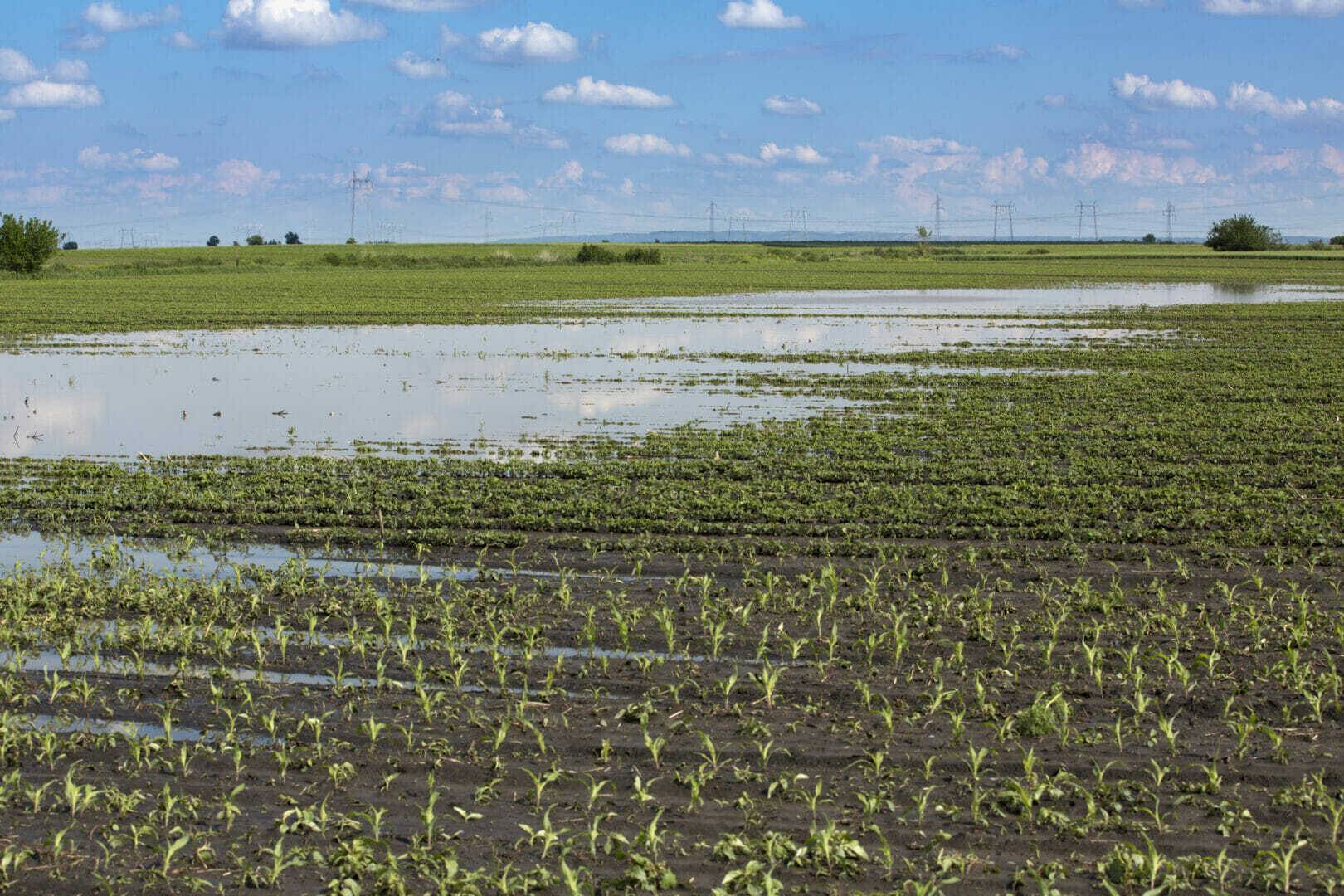
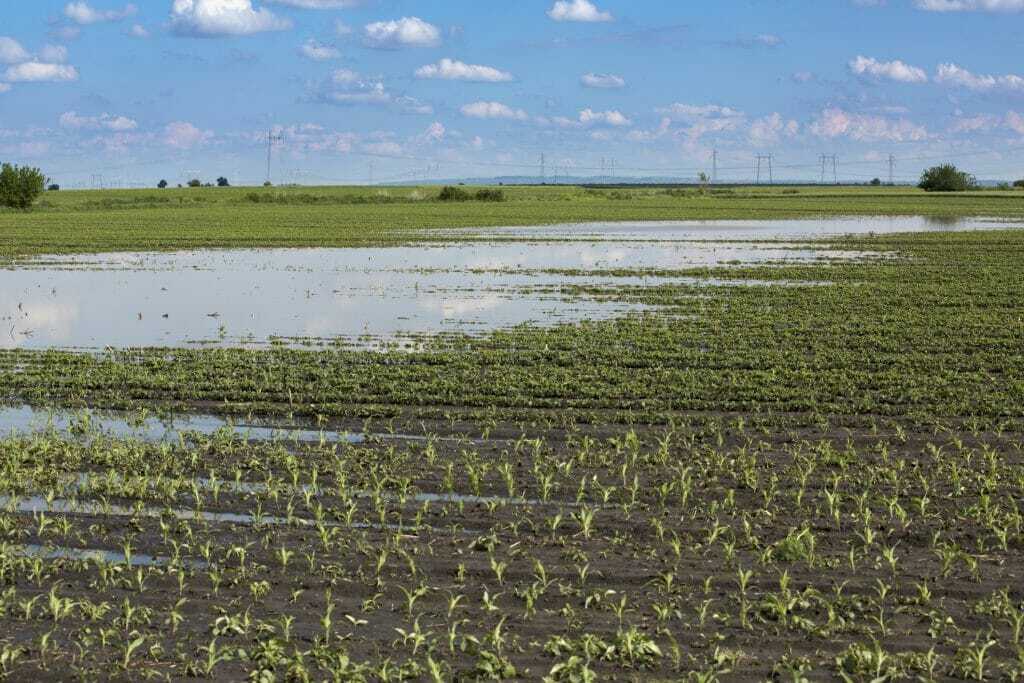
iStock Photo For corn and soybean plants before and after emergence, flooding and saturated soils can jeopardize yield. Germinating seeds require oxygen to survive. After the first 48 hours following a heavy rain or flooding event, oxygen levels in the soil will become entirely depleted and prevent seeds from germinating and continuing to grow.
Yield loss for corn and soybeans depends on the duration of the flooding event and at what growth stage it occurs. The longer a plant is submerged or growing in saturated soil, the less likely it is to survive. Generally, smaller seedlings with lower stamina are less likely to survive following a heavy rainfall event compared to larger seedlings.
Warmer temperatures are associated with higher growth rates, and as a result, a higher amount of oxygen is used. When temperatures exceed the mid-70° range, survival may not exceed 24 hours following the heavy rainfall event.
Effects on Corn Plants
Before V6, the growing point is below ground and damage from flooding is more likely to impact yield or kill the plant. After V6, corn plants fair better in saturated conditions if some of the plant is out of the water. However, the higher temperatures can speed up respiration and oxygen requirements, leading to more plant damage compared to cooler temperatures during a flood event.
Nitrogen loss is another way flooding impacts corn yields. Corn consumes two-thirds of its nitrogen by the start of the reproductive stage and relies on a functional root system. If a flooding event compromises plant roots, yield can be reduced significantly. Research from Iowa State University found that a 30-inch corn plant that had been flooded for 48 hours with minimal nitrogen uptake experienced a 20% reduction in yield. Flooding can also promote seed decay, crazy top that exhibits proliferated tassels, stunted ears or completely barren plants
Impacts on Soybeans
For soybean plants at stages V2 or V3, survival is possible. However, nitrogen fixation can be restricted and reduced yield is still likely. For soybeans submerged for less than 48 hours, yield loss is rarely observed.
Once the first bloom appears at stage R1 the number of pods per node will be greatly decreased if sitting in saturated conditions. Wilting, stunting and yellow-leaves will be expressed in damaged or dying soybean plants. Further, research has found that greater yield reduction has been observed in soybean plants grown in heavy clay soils as opposed to silt loam soils.
Assessing Outcomes
Flooding and prolonged saturated soils pose the greatest threat to young plants that have yet to emerge above ground. As water recedes, any remaining residual mud on corn and soybean plants can reduce photosynthesis. For plants that survive a flooding event, they will be more vulnerable to diseases and stresses over the course of the growing season.
The survival outlook for saturated seeds and germinating plants will not exceed four days. Plants that survive after water levels recede will continue to grow within three to five days.
-
Latham Hi‑Tech Seeds
5-Year Cover Crop Plan

Looking to implement cover crops on your farm? Phil Long walks through a 5-year plan to get started. Tune in below!
-
Latham Hi‑Tech Seeds
Improve Soil Health with Cover Crops

Taking soil samples and then implementing “3 Ps” is key to building soil health: (1) Sample; (2) Plan; (3) Plant and (4) Be Patient. The focus of my post is to provide tips for developing a plan that will leave your soil in better shape for future generations.
-
Sample: It is hard to now where to go, when you don’t know where you are. That’s why baseline tests are so important.
In addition to working for Latham Hi‑Tech Seeds, I also work part time in the emergency room and am a paramedic in rural Wisconsin. When a sick patient is admitted to the hospital, a blood sample test is run. Results from this CBC, or complete blood count, and other tests become the foundation on which we develop the best suited treatment plan. This is really a customized approach to treating a situation because everyone is different.
The same is true with soils. Every single soil is unique, and the state of its biological soil health is based on several factors that only soil sampling can truly reveal. Once we have soil sampling results, we have a point from which we can develop the best suited plan.
There are a lot of tests available, but I have found the most useful test is the Solvita soil test by Woods End Laboratories. This test gives an overview of the biological health of the soil. It also actually provides a recommendation of the best cover crop combination to the benefit and build the soil.
If you’re not already doing so, I encourage you this season to develop the best suited plan to start building your soil structure. Start small, so you don’t get overwhelmed. Choose a soil you believe needs the most help. NOTE: Most conventionally-tilled soils could benefit. Use the absolute best soil sampling equipment you can find. Be very diligent in collecting the sample because the data you get back is only as good as the sample the lab receives from you.
Take your time. Enjoy the experience as you embark on a journey of doing something good for humanity. – Corey Catt, Latham Forage Product Specialist
-
Plan: Now that you have results from soil samples, develop a plan to accomplish your goals. Sometimes it’s easier to take a small acreage out of production, and plant a green manure mix. Here are some plants to consider:
- Grasses, like Latham’s PROTECTioN Cereal Rye, scavenge for excess nitrogen. Grass roots help reduce run off.
- Legumes, like Latham’s FixatioN Balansa Clover produce nitrogen and help reduce run off.
- Brassicas, like Latham’s Driller Daikon Radish help penetrate hard pan and provide a little fertility benefit.
If you plan to interseed cover crops into your existing corn or soybean field in mid-summer, be very mindful of what herbicide you are using because carryover can reduce your cover crop emergence and growth. In particular, the residual of Dicamba herbicide really restricts your cover crop options.
-
Plant: Cover crops may be drilled, broadcast seeded, ariel seeded or even seeded using a Hi-Boy. Equipment is usually a limiting factor to what cover crops get planted. Some county soil conservation offices rent equipment. They also have funding available to pay for some cover crops.
-
PATIENCE: Being patient is the hardest part of trying cover crops and rebuilding soil health. You must think long term rather than seek short-term gratification. When we go through the investment efforts, we would like instant results.
Fact is, you are getting results albeit they are subtle. In many cases, however, the results are exponential when you commit to the plan for years. One Indiana grower found he has increased organic matter (OM) over time. This is huge as increasing OM also increases the water holding capacity in the root zone, which correlates to more yield potential, especially during dry conditions. This grower says he’s gaining about .1% OM every year that he no-tills and uses specific cover crops.
Consider that in 10 years you could gain another 1% OM. Every 1% OM holds about 1 acre inch of rain, which is around 27,000 gallons. Every year you increase the water holding capacity, you improve your chances of higher yield.
We’re all about helping you “grow your legacy” at Latham Hi‑Tech Seeds! Feel free to call me if you’re interested in setting up an on-farm trial for cover crops this growing season. We might even be able to partner with you to try some new products or different rates / seeding studies of existing products. Also note that the 2020 Latham® Seed Product Guide will be distributed in July 2019, so be sure to check out our production offering for Fall 2019 seeding.
-
-
Latham Hi‑Tech Seeds
Take Stock of Soil Health

Our soil is the backbone of every farming operation and a lasting legacy that we will leave to the next generation said Latham’s Forage Product Manager Corey Catt during our Post-Harvest Huddle last month in Wisconsin. It’s up to us to decide if that legacy will be good or bad!
The 2018 growing season was certainly one for the record books. Most of our dealers and customers experienced cool and wet conditions early, followed by rapid growth mid-season, with cool and very wet conditions returning and persisting throughout much of the harvest season. Wet soils after harvest prevented many farmers from doing fall tillage, seeding cover crops and applying manure or Nitrogen. Those who applied fertilizer run the risk of severe compaction and nutrient loss. Those who didn’t apply fertilizer will be “behind the eight ball,” especially if the early spring weather isn’t conducive to drying the soil before fieldwork needs to begin. It can feel like a no-win situation, yet we all know that healthy soils are critical for optimizing yield.
I highly recommend viewing a recently released film by the Soil Health Institute titled “Living Soil.” A press release promoting the film states: “Our soils support 95% of all food production, and by 2060, they will be asked to give us as much food as we have consumed in the last 500 years. They filter our water. They are our foundation for biodiversity. They are vibrantly alive, teeming with 10,000 pounds of biological life in every acre. Yet, in the last 150 years, we’ve lost half of the basic building block that makes soil productive. The societal and environmental costs of soil loss and degradation in the U.S. alone are now estimated to be as high as $85 BILLION every single year.”
For more information about improving soil health and protecting the future of agriculture, attend clinics and seminars. Below is a brief list of upcoming soil and nutrient management conferences that I’ve found:
North Dakota: January 28, 2019
Canad Inn, Grand ForksSouth Dakota: January 22-23, 2019
SDSU campus in BrookingsMinnesota: February 19, 2019
Best Western Kelly Inn, St. CloudIowa: February 4-5, 2019
Scheman Building on the ISU campus in AmesWisconsin: January 15-17, 2019
Alliant Energy Center in MadisonIllinois: January 22-24 at three different sites –
Princeton, Springfield & O’FallonI wish you the best of luck as you prepare for the upcoming 2019 season. Happy New Year!
-
Latham Hi‑Tech Seeds
Where Did My Nitrogen Go?

Nitrogen is the 2nd most expensive input but the #1 yield-influencing input we apply every year to our corn crop. So how can we use it more efficiently?
According to Oklahoma State’s Nitrogen Use Efficiency (NUE) website, side-dress or top-dress practices see about 50% NUE. That means that when you apply 200 pounds/acre of nitrogen to achieve a 200- to 250-bushel yield, the corn crop only uses around 100 pounds per acre of nitrogen. That’s not easy to digest in these economic times, but it provides motivation to determine the best nitrogen rate to keep yields up while ensuring the corn plants use it. This is where precision ag software comes into play.
The Climate FieldView (CFV) Nitrogen Advisor (NA) is one of several nitrogen models that factors weather into the equation. During the 2018 growing season? We tested the CFV NA in a large plot at the Latham Farm in Alexander, Iowa. The test was replicated three times, using two nitrogen rates.
Using the NA, we applied a total 135 pounds per 3 212.9 acre. Using our previous Yield Goal approach (YG), we applied a total of 170 pounds/acre. We put down 25 pounds per acre with MAP before planting then an additional 70 pounds/acre UAN with our herbicide at planting. The last application of 32% UAN was applied June 13. This study also included a high and low seeding rate of 37,500 and 31,500 seeds per acre.
We planted LH 5245 VT2 PRO on May 18 for this study. After analyzing yield across the two different nitrogen rates and two seeding rates, there was not a significant difference in yield between the Nitrogen Advisor and our Yield Goal approach. Given that 31 inches of rain fell this growing season as compared to the 10-year average of 23.4 inches, I thought we’d see more difference between the two nitrogen rates. I flew my drone periodically throughout the growing season and noticed a few NA plots showed some yellowing. The yellowing wasn’t major and it didn’t last long.
I also pulled ear leaf samples at R1 and compared them to our yield results. There was a significant impact of the lower nitrogen rate by the Nitrogen Advisor but only at the higher populations, which follows the trend many researchers have found. As the population increases, nitrogen decreases in the ear leaf. It is difficult to apply enough nitrogen to make up for the extra demand that all those extra plants put on the supply in the soil. Therefore, if you are VR seeding, then VR apply nitrogen to apply more in the heavier seeded areas or consider applying higher blanket rates if you can’t VR apply nitrogen.
The biggest take away from the R1 ear leaf samples is that all were “deficient,” meaning we aren’t applying enough nitrogen overall with our YG approach to see the full potential. We must keep in mind 50% NUE and the role that the weather, especially this year’s heavy rain events, likely played on how much nitrogen was taken up and how much was lost due to leaching.
Look for Part 2 of our research findings in next month’s article. I will discuss the surprising impact that the different seeding rates had on this study.
-
Latham Hi‑Tech Seeds
Patience is a Virtue during #Plant18
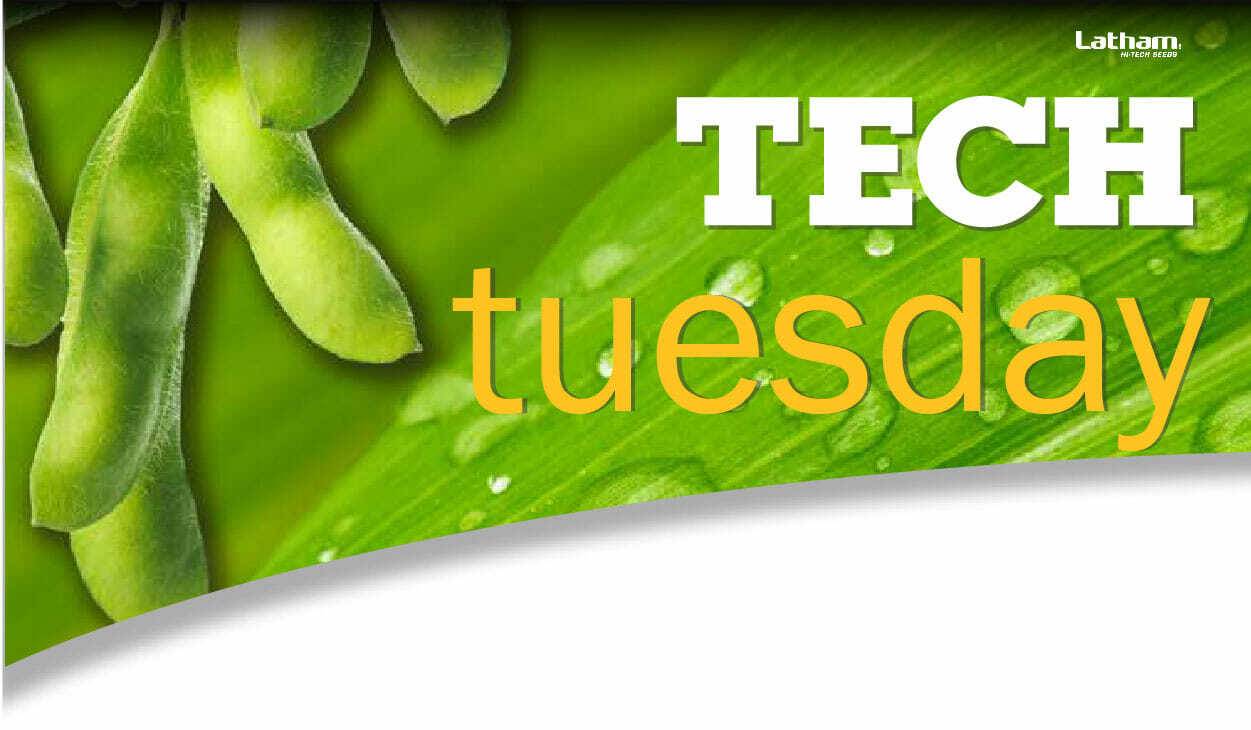
Yesterday’s high of 70 degrees Fahrenheit at Latham Hi‑Tech Seeds, combined with a warm, dry short-range forecast, has all of us itching to get in the field. With such beautiful weather, it’s hard to remember that we received more than a foot of snow last week.
Record-setting cold temperatures and snow fall in the middle of this month have slowed down field work. Temperatures on April 15 set new record lows with daytime highs in the 30s as compared to the 60-degree average for April in Des Moines. Cities in North Iowa received more than a foot of snow in the seven days that followed. Waterloo received 4.9 inches of snow Sunday, April 15, which shattered the previous snowfall record that was set during the statewide blizzard in April 1973. Nearly 8 inches of snow fell Mason City on April 17, bringing the April snow fall total to an all-time high of 25.5 inches.
It’s amazing how quickly soil temperatures have rebounded! Last week soil temperatures hovered around the freezing mark. This week soil temperatures are averaging 47 degrees in Iowa’s northern counties, so we’re getting close to that desired 50-degree soil temperature for planting corn. In addition to checking soil temps, remember to check the moderate and long-range weather forecasts. Be sure the warm, dry weather holds long enough that newly planted seeds won’t imbibe cold water that can lead to chilling effect or that ambient air temperatures won’t freeze seedlings as they emerge.
Temperatures are only half the battle. Wait for fields to dry before taking your equipment out of the shed. Working soils that are too wet leads to yield loss and problems during the growing season:
- Causes nutrient deficiencies
- Reduces crop productivity
- Restricts root development
- Reduces soil aeration
- Decreases soil available water
- Reduces infiltration rate
- Increases bulk density
- Increases sediment and nutrient losses
- Increases surface runoff
- Damages soil structure
Practice patience. Remember to let soil conditions, not the calendar date, dictate when you plant. Believe me, I know firsthand how hard this is to do! I also know that we’ll be glad we waited a few more days.
-
Latham Hi‑Tech Seeds
Podcast: Soil Sampling
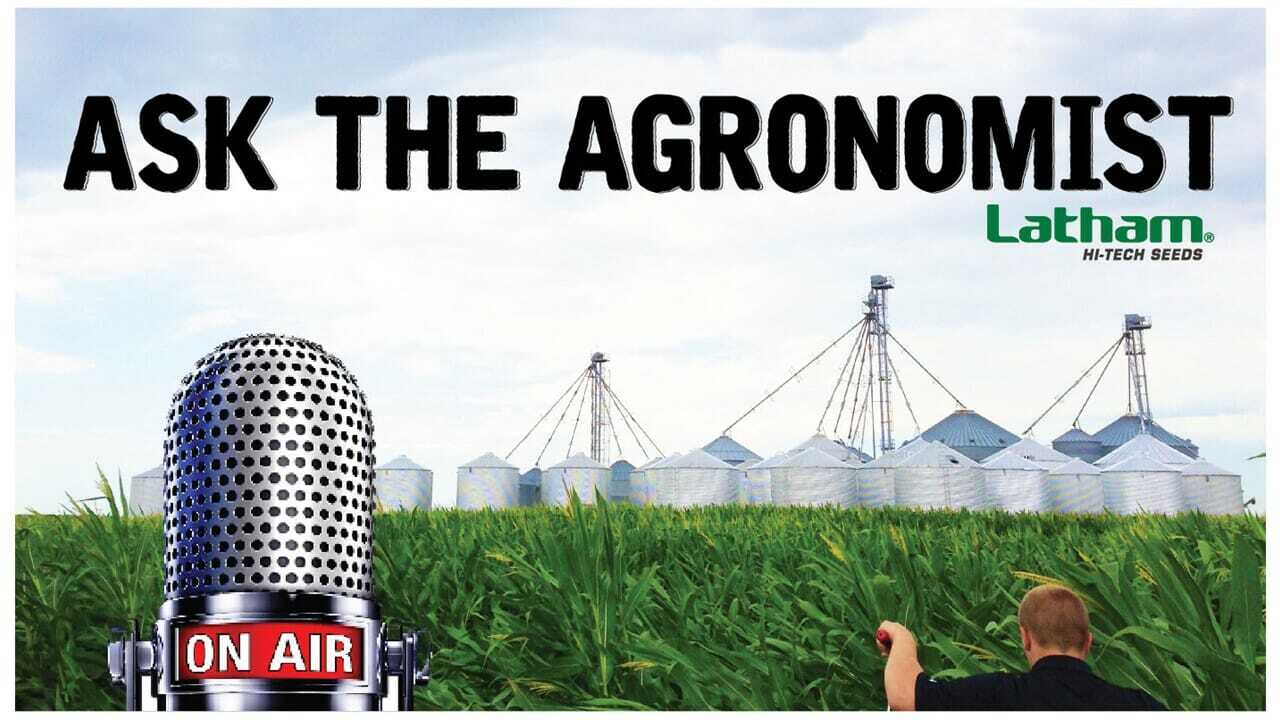 Good morning and welcome back to our Podcast! Our topic today is all things soil sampling. We are also adding a new twist on our Podcast by broadcasting it on Facbook while we record! To view the video, follow the link below!
Good morning and welcome back to our Podcast! Our topic today is all things soil sampling. We are also adding a new twist on our Podcast by broadcasting it on Facbook while we record! To view the video, follow the link below! -
Latham Hi‑Tech Seeds
August is Key Time to Take Field Notes

August is a great month for walking field trials and plots. In fact, I believe August is one of the two most important times to take notes about your growing crops.
Shortly after emergence, you can see how the early growth and vigor of the young plants react under current growing conditions and by different soil types. Then in mid-August you can really start separating maturities on the hybrids. Much information can be gained by looking at hybrids now and noting stalk and root strength, plant and ear height, as well as kernel development.
Last month we had a chance to get together with Latham dealers from six states at our annual sales meeting, and it was exciting to hearhow well their Latham® brand products have been
performing! During that meeting, we let everyone in on a little secret… the new 2018 Seed Guide lists some limited-release products that are identified as “LR” instead of “LH.” Many of these LR products have been planted in our regional show plots, so take a look at them in a field near you!Regional Seed-2-Soil® Technology Tours will be held in August and September throughout Latham Hi‑Tech Seeds’ marketing footprint. There will be in-depth training on new and existing corn and soybean varieties along with agronomic information on the newest industry traits and herbicide recommendations to reduce chances of weed resistance.
Each plot will showcase products that have been selected to perform best in that geography, which is another advantage of working with our independent and regional company. By attending one or more of these tours, you’ll gain more information about the diversity of our lineup. Latham has so many options for growers to choose, ranging from conventional corn to hybrids with SmartStax® technology and from Genuity® Roundup Ready 2 Yield® to Roundup Ready 2 Xtend® and LibertyLink® soybeans.
For exact locations locations, directions, and other information about our field days visit the Latham Facebook Page or call 1.877.GO.LATHAM!
-
Latham Hi‑Tech Seeds
Plant into the Best Seedbed Possible

One of the things I like most about spring is you get to enjoy all four seasons in just a few days. In mid-April, we had snow flurries with an overnight low of 16 on a Sunday. A warm wind brought temperatures into the 70s by mid-week, and that weekend rain fell. That’s why I always tell people to plant by the conditions, not the date on the calendar!
Soil conditions are far more important than planting date. Rather than mudding in your seed to say that it was planted early, you’ll have a better chance of achieving maximum yield by planting into properly tilled soil. Working soils that are too wet leads to yield loss and more problems during the growing season from soil compaction. Restricted root development, nutrient deficiency and reduced infiltration rate are among the top 10 reasons to avoid soil compaction.
Adapted full-season corn hybrids can compensate somewhat for later plantings. As planting is delayed, hybrids shorten the time between planting and silking. Research shows that development and final yield of these hybrids will not be largely affected unless frost occurs especially early in the fall. That’s why we recommend waiting until May 15 in North Dakota and May 25 in Iowa before switching to an earlier maturing corn hybrid or switching to soybeans.
Patience is also key when planting soybeans. Planting into a field that is too wet will reduce emergence and plant population, which most often leads to reduced yield. Another cause of reduced yield is weed pressure. Make sure the sprayer is right behind the planters. Otherwise, soybeans might poke through the ground before your pre-emerge was applied.
We get one chance every spring to create the best seedbed possible for planting, so let’s take advantage of it! This may require a different piece of tillage equipment than originally planned, but taking the time to make the equipment switch will pay big dividends by resulting in better seed-to-soil contact that enhances germination and early growth.


